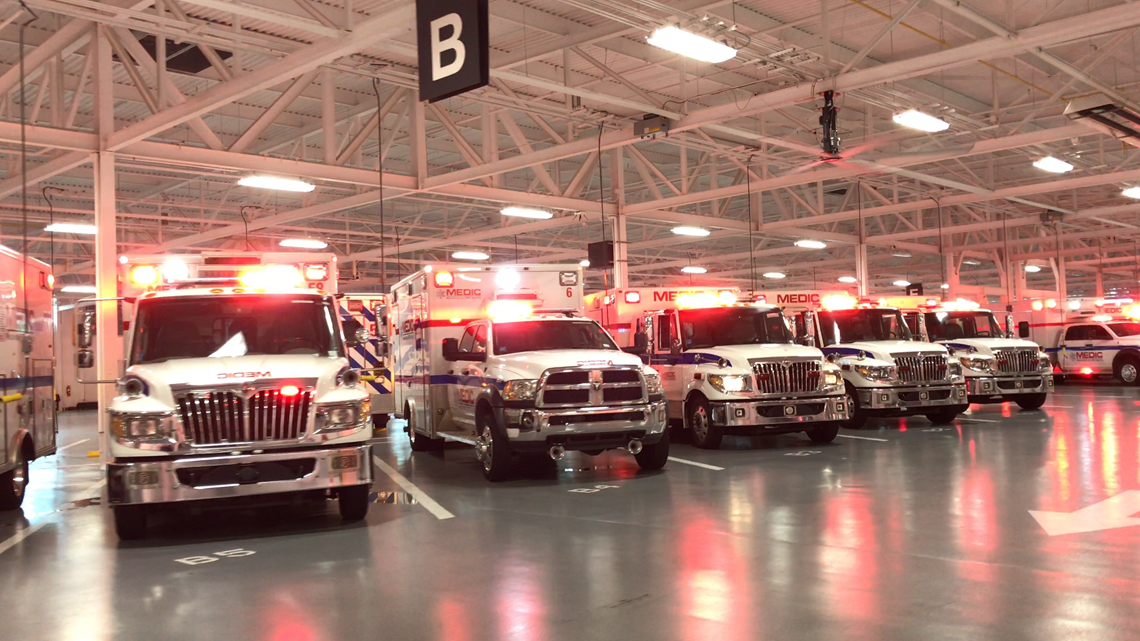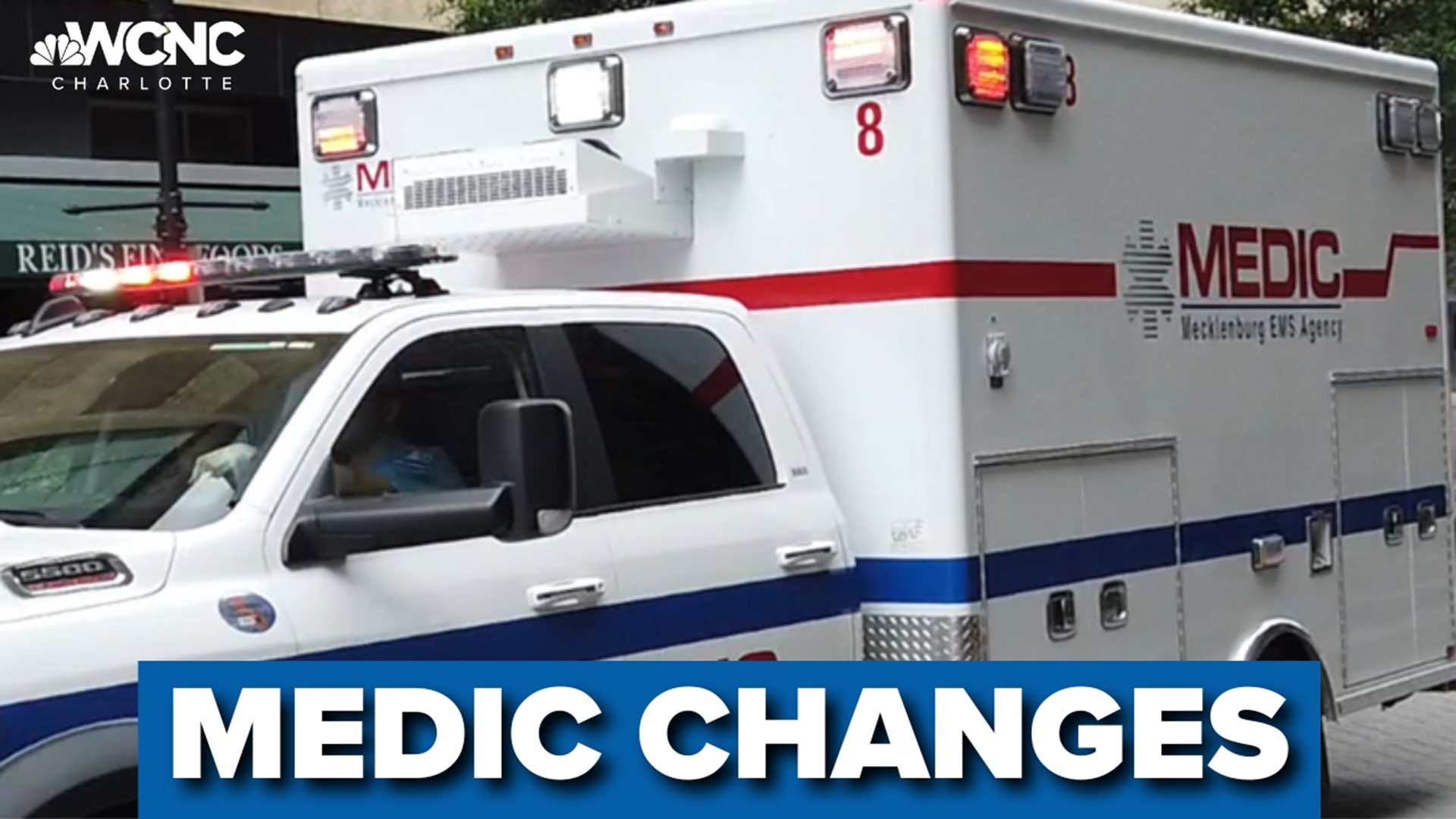CHARLOTTE, N.C. — You can expect to see fewer emergency lights and sirens in Mecklenburg County. Starting Monday, Mecklenburg Emergency Medical Services Agency, more commonly known as Medic, will only use them for the most serious emergencies.
Before the change, MEDIC found they responded to emergencies using lights and sirens about 76% of the time. However, after examining the patient, they only found it serious enough to use lights and sirens for transportation to the hospital about 5% of the time.
The agency said by reducing its usage of lights and sirens, it will be a better use of its resources.
“Our responses to our transports are misaligned," John Peterson, the executive director of Medic, explained. "So we are responding to way more calls than we need to be with lights and sirens."
With this change, Medic is essentially changing how it responds to lower-risk emergency calls. They will now respond to those calls without lights and sirens. For patients and their loved ones, that could mean longer wait times as ambulances will now be following the flow of traffic while responding.
However, Peterson said their rapid response to high-priority emergencies will not change.
“When somebody has a heart attack or a stroke, or a significant car crash, we will respond with lights and sirens to those calls,” he clarified.
When you call 911 in Mecklenburg County, you are asked if you need police, fire or Medic. If you need Medic, a dispatcher will walk you through a series of questions to determine the type of emergency you are experiencing. With the new system, the operator will then provide you an anticipated arrival time of 15, 30, 60 or 90-minutes.
“More often you will see the 30 or 60 minutes. These are calls like a minor traffic accident in a parking lot where there is an injury, maybe there is not, and if there is one, it is minor,” Peterson explained. “It could be a minor assault where someone gets scratched.”


The agency said the goal is to reduce lights and sirens responses from 76% to 19%. Peterson said the slowdown is also safer for the public.
“We know that when we turn on our lights and sirens, it increases our risk of crashes by 50%.”
Peterson said the change is about the agency being more efficient.
“We want to make sure that we are utilizing our resources,” he continued. “If we go a little bit slower on those types of calls…it allows us to preserve our ambulances for the very serious cardiac arrest calls.”
Peterson said they have been moving towards this change for the last 10 years.
“The combination of the pandemic and medic staffing shortage, all that together helped moved forward with needing to do response configuration now," Peterson said.
He adds the changes are also necessary to keep up with the growing city while maximizing manpower.
“The number one thing people want to make sure is that they are getting a timely ambulance response with those life-threatening emergencies, and we are absolutely going to continue to provide that," Peterson explained.


Dimple Ajmera, an at-large Charlotte city council member, said a system that prioritizes serious emergencies is a step forward, but she does have some concerns.
“I do have some concerns around a negative impact on first responders, especially our fire department resources,” she said. “I’m also concerned about service in our community. How does this really sit with our residents?”
The agency said it plans to track its performance and meet with the fire department monthly to make sure there is no adverse impact on the service they provide.
After a year, they also plan to show performance data to county commissioners.
Contact Jesse Pierre at jpierrepet@wcnc.com or follow her on Facebook, Twitter and Instagram.

